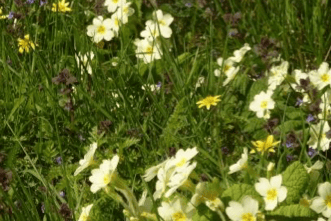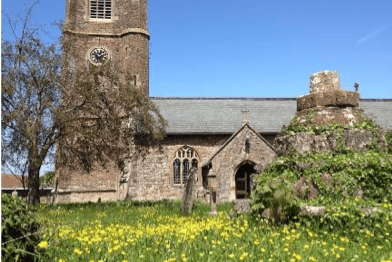CHURCH communities across West Somerset are being encouraged to join a wildlife initiative making use of churchyards and burial grounds.
Wilder Churches was started in 2021 as a partnership between Somerset Wildlife Trust and the Diocese of Bath and Wells.
It aims to support faith communities to get to know the nature in their local churchyard, other church land, or burial ground, and work together to find ways to increase their value for wildlife.
The trust’s engaging with nature co-ordinator Pippa Rayner said: “Churchyards are often the oldest enclosed piece of land in a parish and many still support a rich variety of wildflowers and wildlife, having remained unscathed from the widespread loss of habitats seen in the wider countryside due to changing land management practices.
“The Diocese of Bath and Wells oversees 477 parishes of over 900,000 people in the county and are working with us to bring communities and church leaders together to learn more about their churchyard or burial ground and how they can manage them with wildlife in mind.
“Key to the initiative is the ongoing support provided to anyone and everyone interested in being involved.

“Free online training sessions and get-togethers are supporting communities to take positive action in churchyards and other burial grounds at a pivotal time for nature.”
An online introduction to welcome new church communities to the initiative will be held on March 29 using the Zoom video conferencing service from 7 pm to 8.30 pm.
Places can be booked via the website https://www.somersetwildlife.org/events.
One West Somerset faith group which has been taking part in Wilder Churches is St John the Baptist Church, in Carhampton.
Its churchyard is maintained monthly by local volunteers who have been increasing its value for wildlife since 2010.
The Carhampton churchyard now boasts a wildflower meadow and an array of waxcap species thanks to leaving wildlife-friendly areas to grow wild and varying the cutting regimes in different areas.





Comments
This article has no comments yet. Be the first to leave a comment.